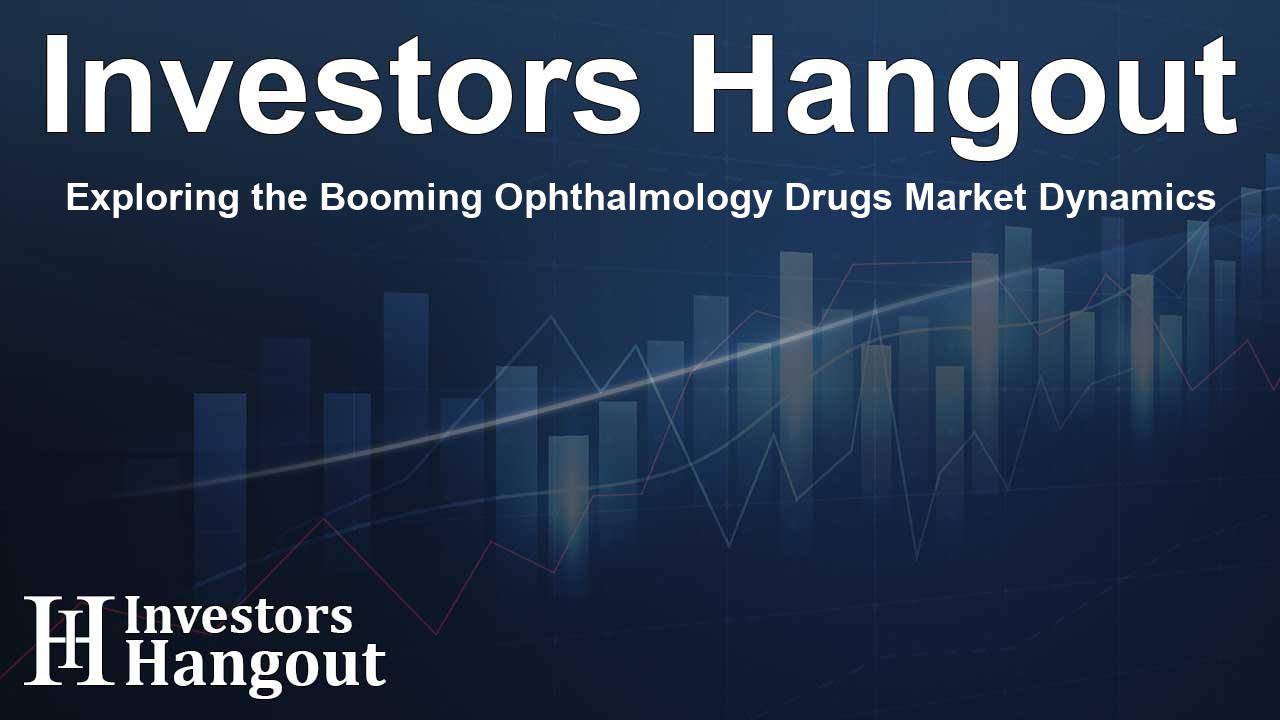Exploring the Booming Ophthalmology Drugs Market Dynamics

Ophthalmology Drugs Market Overview
The ophthalmology drugs market is experiencing remarkable growth, projected to reach a valuation of $26.28 billion by 2030. This represents a compound annual growth rate (CAGR) of 6.1% from the current market value of approximately $19.52 billion in 2025. Key factors driving this impressive growth include an increasing number of individuals affected by various eye conditions and a robust pipeline of new drug developments targeting ophthalmological indications.
Market Growth Drivers
One of the most significant contributors to the expansion of the ophthalmology drugs market is the rising incidence of eye-related ailments. With a growing global population, particularly in aging demographics, there is a noticeable upsurge in conditions such as age-related macular degeneration and diabetic macular edema.
Moreover, the pharmaceutical industry is witnessing heightened investments in research and development, leading to innovative therapies designed to treat and manage eye diseases effectively. Collaborations between companies also play a crucial role in creating a more dynamic market landscape, nurturing advancements in treatment methodologies.
However, the market is not without challenges. The off-label use of certain medications and adherence issues with intravitreal injections may hinder optimal market performance. It is essential for pharmaceutical companies to address these barriers proactively to ensure sustained growth.
Intravitreal Injections: A Preferred Administration Method
Why Intravitreal Injections?
When discussing routes of drug administration, intravitreal injections stand out as a vital method employed in treating a diverse array of ocular conditions. Major breakthrough medications for retinal diseases, including aflibercept and ranibizumab, utilize this delivery method due to its effectiveness in ensuring the drug directly reaches the retina.
Several factors underpin the popularity of intravitreal injections in the treatment of retinal diseases. Their proven efficacy, particularly in managing chronic conditions, has established a solid foundation for their use. Additionally, the high frequency of required treatments and favorable reimbursement policies contribute to the increasing adoption of this method across various markets, boosting its overall demand.
Leading Products in the Market
Monoclonal Antibodies and Fusion Proteins
Within the ophthalmology drugs market, monoclonal antibodies and fusion proteins are crucial players. This category includes well-known treatments like Eylea and bevacizumab, which have gained substantial market share due to their demonstrated efficacy and safety profiles.
The advantages of these biologics extend beyond their effectiveness; they also boast a longer patent life and high cost-effectiveness. These elements make them attractive options for patients and healthcare providers alike, leading to significantly higher revenue shares within the sector.
Regional Market Insights
The North American Dominance
Geographically, the North American segment remains the largest contributor to the ophthalmology drugs market. This dominance can be attributed to favorable reimbursement structures, significant investments in R&D, and a rising prevalence of eye diseases across the region.
The U.S. FDA’s approval of numerous drugs designed to treat various ophthalmic conditions enhances patient access to treatment, thereby improving health outcomes. The approval includes a wide array of biologics and biosimilars, showcasing the commitment to addressing ophthalmological needs.
Innovative Developments in the Market
Key industry leaders are continuously striving to enhance their product offerings. For instance, Regeneron Pharmaceuticals recently launched an advanced version of Eylea aimed at delivering longer-lasting effects with fewer injections, showcasing their focus on innovation.
Bayer AG is another major player, actively investing in research initiatives centered on cell and gene therapy. Their partnerships with biotech firms, such as BlueRock Therapeutics, underscore a commitment to pioneering new therapies that address complex retinal diseases.
Conclusion: The Future of Ophthalmology Drugs
The future of the ophthalmology drugs market looks bright, characterized by relentless innovation and expanding treatment options. As companies navigate the challenges and capitalize on emerging opportunities, the potential for this market to evolve continuously remains promising. Through strategic investments and prioritizing research, the industry can effectively meet the growing demand for ocular therapies, ultimately improving patient care.
Frequently Asked Questions
What is the projected market size for ophthalmology drugs by 2030?
The ophthalmology drugs market is projected to reach $26.28 billion by 2030.
What are the main drivers of growth in this market?
The primary drivers include an increasing population with eye disorders and significant advancements in drug development.
Which drug administration method is most prevalent?
Intravitreal injections are the most commonly used method due to their effectiveness in treating retinal diseases.
Who are the leading companies in the ophthalmology drugs market?
Key players include Regeneron Pharmaceuticals, Bayer AG, and Novartis AG.
What challenges does the ophthalmology drugs market face?
Challenges include off-label drug usage and patient adherence to treatments.
About The Author
Contact Henry Turner privately here. Or send an email with ATTN: Henry Turner as the subject to contact@investorshangout.com.
About Investors Hangout
Investors Hangout is a leading online stock forum for financial discussion and learning, offering a wide range of free tools and resources. It draws in traders of all levels, who exchange market knowledge, investigate trading tactics, and keep an eye on industry developments in real time. Featuring financial articles, stock message boards, quotes, charts, company profiles, and live news updates. Through cooperative learning and a wealth of informational resources, it helps users from novices creating their first portfolios to experts honing their techniques. Join Investors Hangout today: https://investorshangout.com/
The content of this article is based on factual, publicly available information and does not represent legal, financial, or investment advice. Investors Hangout does not offer financial advice, and the author is not a licensed financial advisor. Consult a qualified advisor before making any financial or investment decisions based on this article. This article should not be considered advice to purchase, sell, or hold any securities or other investments. If any of the material provided here is inaccurate, please contact us for corrections.
